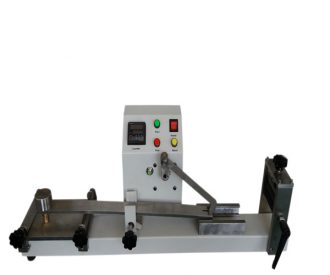Rubbing colorfastness in regards to exposure to friction intensity is one of the most important tests in textile quality inspection for colorfastness. The evaluation of Rubbing color fastness depends on the degree of staining of white cloth. After testing, the white cloth is compared to staining sample cards to measure staining fastness. Rubbing color fastness, same as washing color fastness, divide into 5 grades and 9 files, among which grade 5 is the best and grade 1 is the worst. The test results are directly related to the overall colorfastness of the fabric. Some dyes of poor quality can cause different degrees of harm to the human body.

rubbing test machine for rubbing testing
Therefore, different organizations and countries have set standards to strictly limit the colorfastness of apparel and home textiles in order to minimize the potential dangers the products may cause. Different organizations and countries, according to their national custom and industrial development standards, have developed methods of testing the safety of the dye after being rubbed, similar to daily wear and tear. There are differences between these test methods and they have a certain impact on the test results.
The textiles tested the same sample according to different standard methods for colorfastness to rubbing test and yielded the following results:
1、Dry friction (dry rubbing) is better than wet friction.
2、Dry light-colored fabric exposed to wet friction holds better color fastness levels, generally 5/4 to 5; and dark fabrics, denim, corduroy and printed fabric hold poor color fastness levels, usually 2 ~ 3/2.
3、Dry and wet friction of flocking are basically the same. Different test methods do not affect the results.
4、Moist wool fabrics and pure polyester fabrics have better colorfastness than dry’s.
5、Under different friction methods, the fabric of the raw material composition also has a certain impact. There are differences between cotton fabrics, while pure polyester fabrics are basically the same.
6、Under different friction methods, the fabric structure makeup also has a certain impact. There are differences between plain weave fabrics, while twill weave fabrics are basically the same.
7、Under different friction test methods, velvet fabrics are basically the same.
8、For the same sample size, almost same friction test data was obtained. There will be a difference of 0.5 to 1.0, for the relative grades of the Japanese standard are slightly lower. However, the relative increase of the American standard produces higher grades and GB between the two.